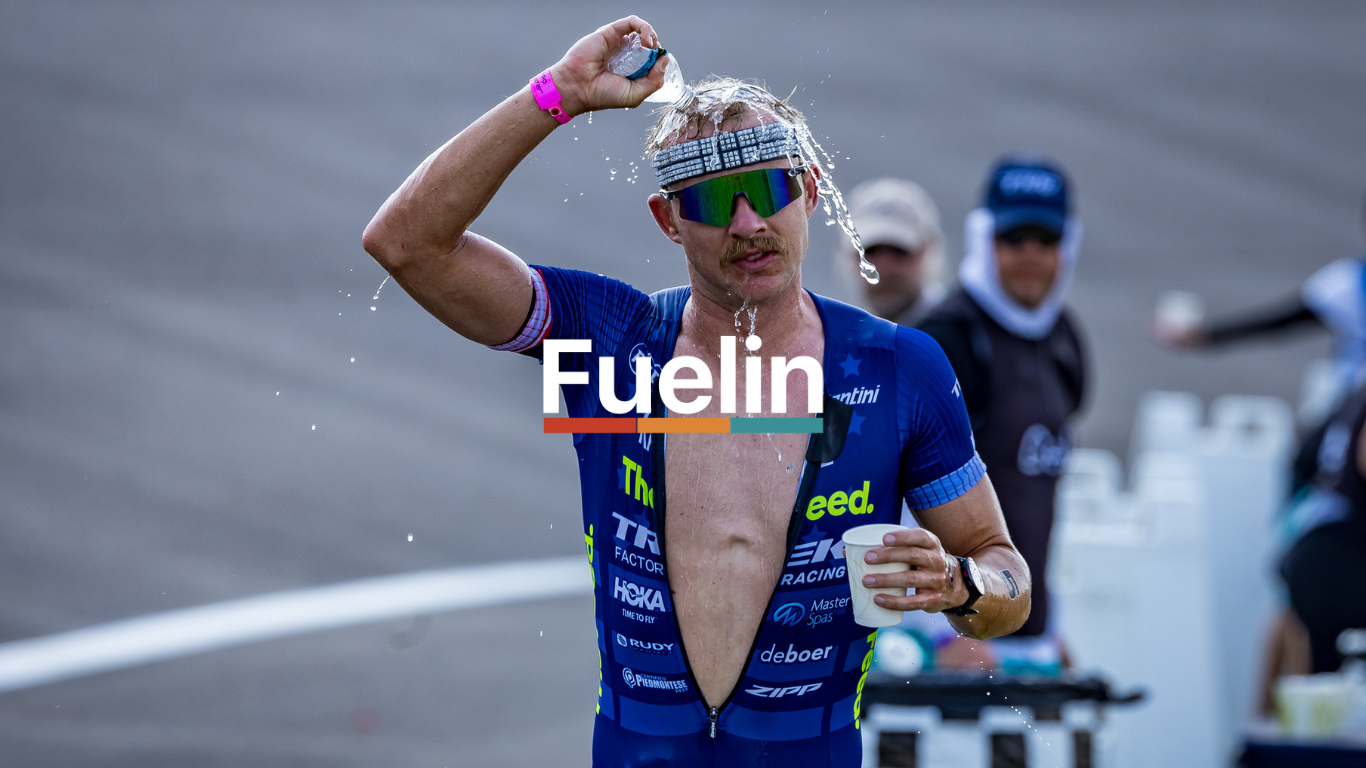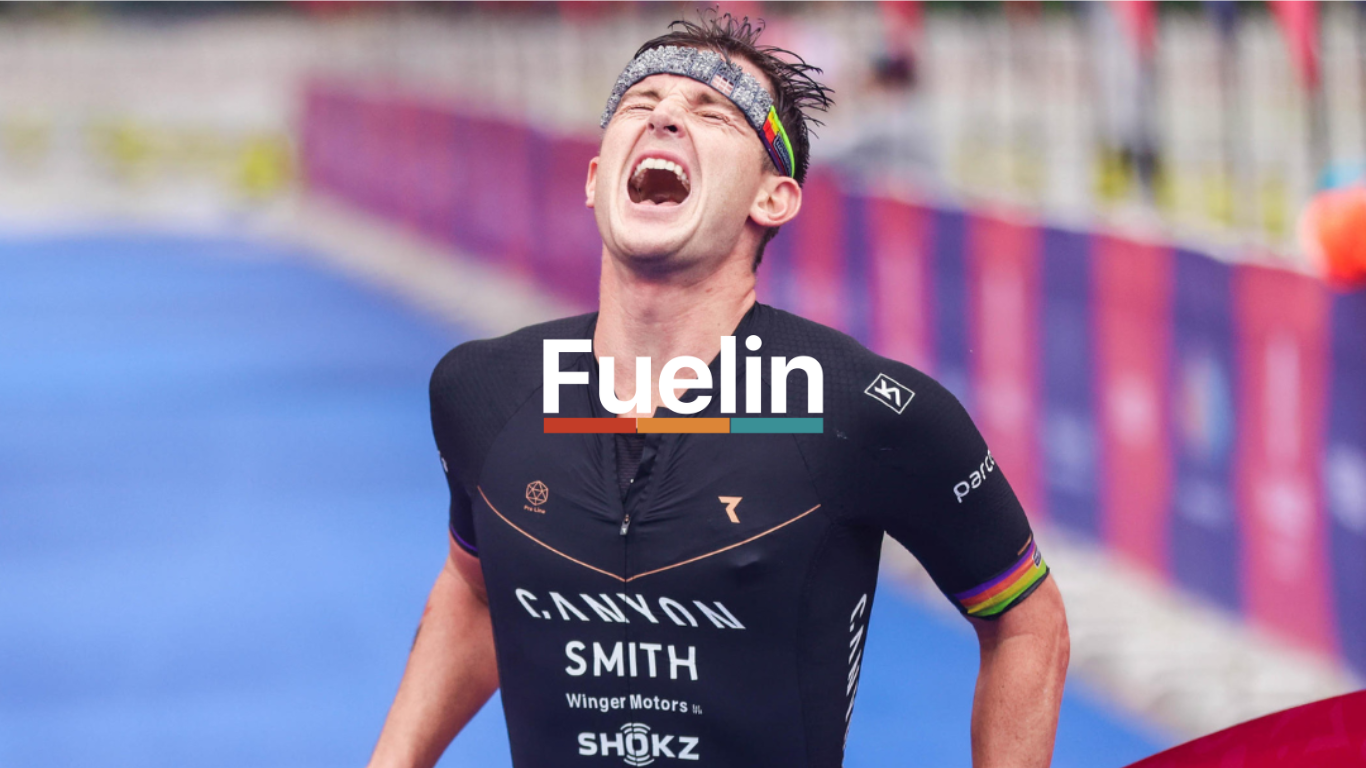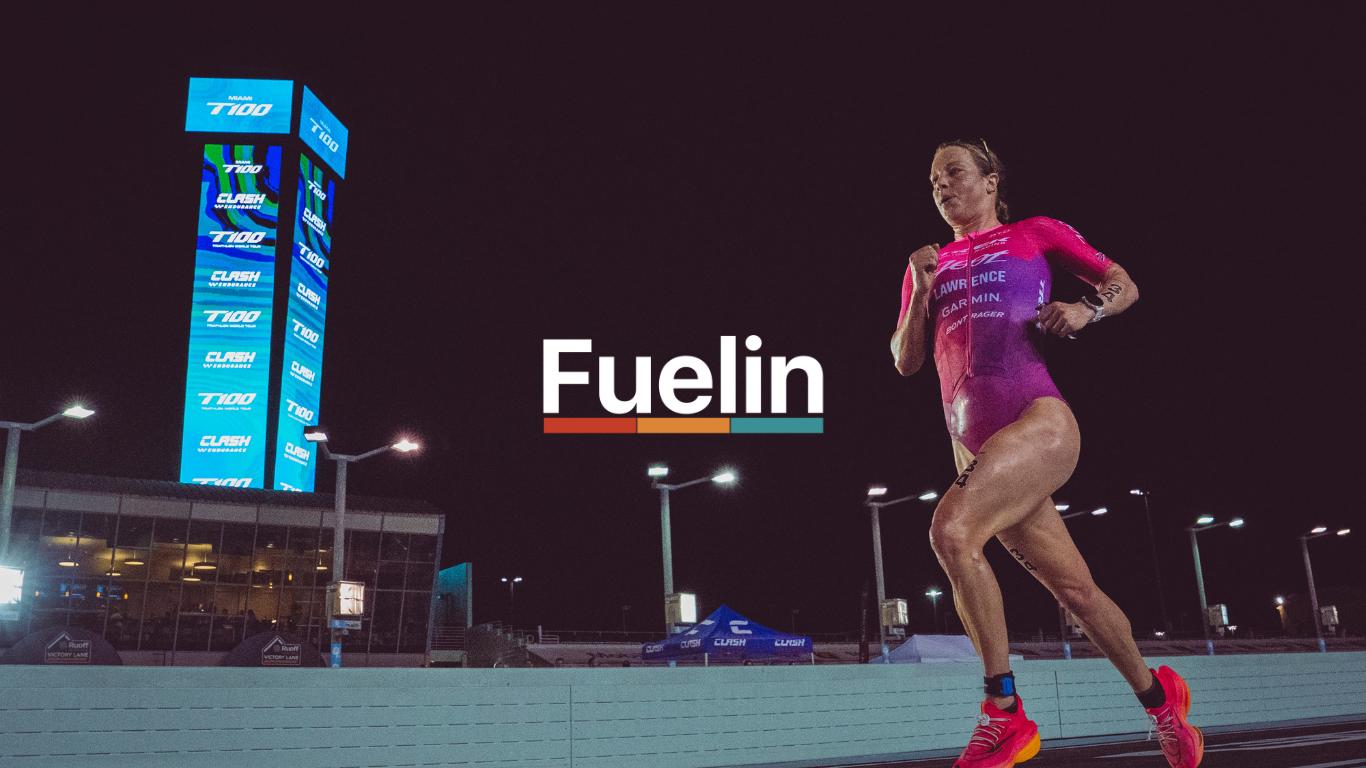
Key Takeaways
- Preparing for race day is more than just nailing your training—it’s about eliminating guesswork through systematic nutrition and hydration planning. The earlier you start, the more confident you'll be.
- Using Fuelin, athletes can effectively plan, test, and log their carb intake, sweat loss, and race-day strategy with real-time guidance and adaptive plans built around their training programs (TrainingPeaks, HumanGO, TriDot, Final Surge or within Fuelin)
- Nutrition is not theory—it’s trainable. And when you use a structured system like Fuelin to track, refine, and repeat key fueling strategies, you don’t just show up—you show up ready.
Race Day is Not a Guessing Game
It’s tempting to think that race-day success comes down to fitness. But ask any experienced endurance athlete and they’ll tell you: fitness is only part of the equation. Real readiness comes from removing uncertainty—about your fueling, hydration, gut tolerance, and the execution of your plan.
At Fuelin, we work with triathletes, cyclists, marathoners, hybrid and ultra-distance athletes of all levels to create that certainty. We guide each athlete through a clear, evidence-based checklist that helps them test, refine, and personalise every aspect of their race-day nutrition and hydration strategy. The Fuelin app adapts to your training load and feedback—so you’re not just guessing, you’re building absolute confidence through repetition.

The 12-Week Countdown: Building Your Fueling Foundations
Twelve weeks out is the ideal time to stop winging it and start applying structure. Using the Fuelin platform, you can systematically test your sweat rate, carbohydrate tolerance, and race-day nutrition approach—all within the same training sessions you're already doing.
Sweat Testing: Quantify What You Lose
Sweat rate testing forms the cornerstone of any hydration plan. If you're losing 1.5 to 2.0 litres per hour in hot or race-similar conditions, failing to account for that will compromise both performance and recovery. You don’t need to replace 100% - more likley to 60-80% depending on your sport and ability to cope with dehydration.
Fuelin guides you through exactly how to do this: weigh yourself before and after key sessions, log the environmental conditions, and identify patterns. You can track your sweat loss over time, adjust hydration accordingly, and see how you perform with different electrolyte strategies. Rather than playing hydration roulette on race day, you’re going in with a custom, tested plan.
Carbohydrate Capacity Testing: Train the Gut, Not Just the Legs
Most endurance athletes dramatically underfuel—not because they don’t care, but because they haven’t tested what their gut can handle. Fuelin addresses this head-on through structured carbohydrate capacity tests, which are automatically suggested based on your training schedule and intensity zones.
Over the 12-week lead-in to race day, the aim isn’t simply to increase carbohydrate intake for the sake of hitting a generic number. The goal is to progressively and deliberately push each athlete toward their maximum tolerable carbohydrate capacity, based on what’s right for them. That means taking into account their absolute power output (watts), their ability to consume and digest carbohydrates during race-specific intensities physically, and ultimately, where they feel and perform best.
While 80–120g/hr is a helpful benchmark range, not every athlete will land there—and that’s okay. Triathletes and cyclists will have the top end of that number in focus if their watts is high enough. Bodyweight plays less of a role here because cycling is a non-weight-bearing sport. The power output is the most significant determinant, followed by the individual athlete's metabolic profile and ability to utilise carbs. For runners, that upper number will likely come down to 80-90g/hr.
Again, depending on pace, ability to tolerate and the athlete's weight. The focus is on using multiple transportable carbohydrates (glucose + fructose) in real-world sessions and logging not just grams per hour, but how the body responded: was there GI distress? Was there a noticeable boost in performance? What was the pace, terrain, and temperature? This is practical, applied testing—not guesswork. And over time, that data reveals what “optimal fueling” looks like for each athlete.
The Fuelin app makes it simple. After each session, athletes log what they consumed—solid, liquid, or gel—and rate how they felt. The app calculates grams per hour, flags any GI issues, and shows you whether your fueling hits the green zone. It’s visual, it’s data-driven, and most importantly, it’s personal.
Week-by-Week: Translating Data Into Confidence
8 to 6 Weeks Out: Race Simulations and Nutrition Setup
This is where you put the puzzle together. By now, you’ve accumulated data on sweat loss, carbohydrate tolerance, and race intensity. With Fuelin, you’ll begin seeing how these variables align into a personalized race fueling strategy.
Use this period to test your real-world setup. That means doing full race simulations—swim-bike or bike-run—with your exact race kit and nutrition products. Can your bike hold six bottles? Do your gels fit in your suit or bento box? Can you open a wrapper while riding hard?
Fuelin lets you log these sessions in context, compare your data, and identify weak spots. If something’s not working, you know well before race week.
Carb Loading Practice: Go Beyond Pasta and Bagels
Carbohydrate loading isn’t something you try for the first time two days before your race. It’s a process, and like anything else in endurance sport, it requires practice. Fuelin simplifies this by giving you daily carb targets based on your body weight, training demands, and event distance.
Two to three carb-load rehearsals—ideally around 8 and 4 weeks out—will help you identify what foods work best, how to structure your meals, and how your body responds to high-carb days. Many athletes report feeling bloated, sluggish, or constipated during their first carb load. That’s fine—if it’s a rehearsal. Not if it’s the night before your A-race. Carb loading is not a time for the usual recommended “fists of veggies” - fiber is not something you want to be taking a lot of onboard during the carb load period.
Fuelin will walk you through this step-by-step, calculate your targets, and show you if you’re hitting them. It also helps you diversify your carb sources—using rice, oats, fruit juice, sports drinks, sports products (gels drinks and bloks) and other gut-friendly options—so you avoid overloading on just bread or pasta.

Final Fortnight: Precision and Planning
Two Weeks Out: Heat Protocols and Full Dress Rehearsal
If you’re racing in a hot climate—or even moderately warm—you should be implementing a heat acclimation protocol. Fuelin provides the timing and suggestions (e.g., post-workout hot water immersion, sauna sessions) to help your body adapt. You’re not just tolerating heat—you’re training to perform in it.
At the same time, run a full race-day dress rehearsal: breakfast, kit, fueling, pacing. Upload it into Fuelin, and the app will track your carb intake, hydration, and performance in race-mimicking conditions. Any surprises? Fix them now—not next to your bike in T1.
Race Week: Execute What You’ve Practised
Carb Load Like a Pro, With the Plan Already Done
Your race is loaded in the Fuelin app. We will pick it up if it is TrainingPeaks, HumanGO, TriDot, or Final Surge. If you don’t use one of these, load it directly into Fuelin. We do the rest! That means your carb-loading targets will automatically appear in your daily plan. You’ll know exactly how many grams to aim for, and whether you’re hitting green. No guessing, no second-guessing.
Stick with low-fibre, familiar foods. Reduce vegetables and FODMAPs if you’re sensitive. You’ll see these tips right inside the app so you can follow them with confidence.
Race Morning: Breakfast You’ve Practised 10+ Times
By now, you know what breakfast works. Whether it’s white rice, overnight oats, bagels, fruit, or a sports drink, you’ve tested it on your long rides and brick sessions. You’ve woken up at 4:00 am and practised eating at a race-specific time.
Fuelin reinforces that consistency. Fuelin will tell you what a proper green breakfast looks like, suggest examples, and remind you of what you’ve logged successfully before. Green is HIGHER carbs (ie at least 100g). You will be aiming for at least 100g for your pre-race meal.
And if you’re using caffeine, it’ll help you track timing, form, and effectiveness. No “try it and see” experiments here—just what’s already worked.
Summary: Train It, Track It, Trust It
This entire system exists for one reason: to make race day feel like just another well-executed training session. With Fuelin, we’re not leaving anything to chance. You’ve tested your sweat rate. You’ve built up your carb tolerance. You’ve simulated race day. You’ve practised carb loading. You’ve nailed race day breakfast. And you’ve got it all logged, visualised, and ready to review.
You’re not just fueling better—you’re performing better. Because the best athletes don’t just train harder, they prepare smarter.
If you want to take the guesswork out of race week, start your 12-week countdown today—with Fuelin guiding every step.
Thanks for reading,
Scott